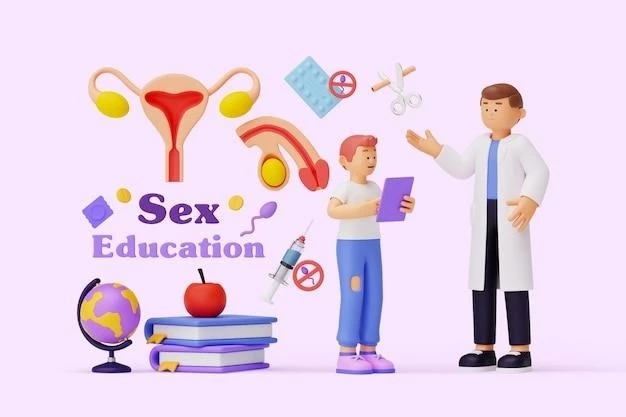Introduction to Sexually Transmitted Diseases (STDs)
Mycoplasma genitalium (Mgen) and other infections like syphilis, gonorrhea, and chlamydia are prevalent STIs.
Learn about the transmission, symptoms, prevention, and management of more than 20 types of STDs.
STIs can be caused by bacteria, viruses, or parasites and are primarily transmitted through sexual contact.
Definition and Overview
Sexually transmitted diseases (STDs) are infections transmitted through sexual activity, including vaginal, anal, and oral sex. These diseases can be caused by bacteria, viruses, or parasites and often do not produce symptoms initially. Understanding the transmission, prevention, and treatment of STDs is crucial for maintaining sexual health.
Common Types of STDs
Explore various sexually transmitted infections (STIs) like Mycoplasma genitalium (Mgen), syphilis, herpes, HIV, and more.
Chlamydia
Chlamydia is a common sexually transmitted infection caused by the bacterium Chlamydia trachomatis. It can affect both men and women and is often asymptomatic, making regular screening crucial. Antibiotics are typically used for treatment, emphasizing the importance of early detection and prevention efforts.
Gonorrhea
Gonorrhea, caused by the bacterium Neisseria gonorrhoeae, is a common sexually transmitted infection that can affect various parts of the body. It often presents with symptoms like painful urination and discharge. Early diagnosis and treatment with antibiotics are essential to prevent complications and further transmission.
Syphilis
Syphilis, caused by the bacterium Treponema pallidum, is a curable sexually transmitted infection associated with significant morbidity if untreated. It can lead to severe complications, particularly in individuals living with HIV. Prompt treatment and testing are vital to prevent adverse outcomes, especially in pregnant individuals.
HIV/AIDS
HIV/AIDS, a chronic viral infection, is primarily transmitted through sexual intercourse and blood-to-blood contact. Without proper treatment, HIV can progress to AIDS, leading to severe immune system damage and potentially fatal opportunistic infections. Early detection through testing and adherence to antiretroviral therapies are vital for managing HIV infections.
Genital Herpes
Genital herpes is a common sexually transmitted infection caused by the herpes simplex virus (HSV). It can result in sores on or around the genitals and rectum, accompanied by itching and pain. While there is no cure, antiviral medications can help manage symptoms and reduce the frequency of outbreaks.

Transmission and Symptoms
Sexually transmitted diseases spread through sexual activity like vaginal, anal, and oral sex. Many STDs may initially be asymptomatic, highlighting the importance of understanding their transmission mechanisms.
Routes of Transmission
STDs are primarily transmitted through sexual activity, including vaginal, anal, and oral sex. Some infections can also be transmitted through blood transfusions, sharing needles, or from mother to child during childbirth or breastfeeding. Understanding these transmission routes is essential for prevention strategies.
Many sexually transmitted diseases (STDs) present with a range of symptoms, such as genital sores, pain during urination, abnormal discharge, itching, and burning sensations. However, some STDs may not exhibit any symptoms initially, emphasizing the importance of regular screening and testing.
Diagnosis and Testing
Diagnosing sexually transmitted diseases (STDs) often involves screening procedures and laboratory tests. Early detection through regular testing is essential for timely treatment and preventing the spread of infections.
Common Symptoms
Many sexually transmitted diseases (STDs) present with various symptoms such as genital sores, discharge, itching, and burning during urination. It is essential to recognize these signs and seek prompt testing and treatment to prevent complications and further transmission.
Laboratory Tests
Laboratory tests play a crucial role in diagnosing sexually transmitted diseases (STDs). These tests often involve analyzing blood, urine, or tissue samples to identify the presence of pathogens responsible for the infection. Accurate and timely laboratory testing is essential for proper diagnosis and effective treatment.
Treatment and Management
Antibiotics and antiviral drugs are commonly used to treat various sexually transmitted diseases. Lifestyle changes, preventive measures, and regular screenings are essential for effective management.
Antibiotics and Antiviral Drugs
The primary treatments for sexually transmitted diseases (STDs) often involve antibiotics for bacterial infections and antiviral drugs for viral infections. Proper and timely administration of these medications is crucial for effectively managing and eradicating the infections.
Lifestyle Changes and Prevention
Aside from medical treatment, lifestyle changes such as practicing safe sex, using condoms consistently, reducing the number of sexual partners, and avoiding sharing needles can help prevent the transmission of sexually transmitted diseases. Education and awareness campaigns also play a crucial role in promoting safe sexual practices.

Impact of STDs on Public Health
Sexually transmitted diseases have a significant impact on public health, affecting millions annually and posing challenges in prevention and treatment. The rising trend of STDs, particularly among specific demographic groups, emphasizes the importance of awareness and intervention.
Statistics and Trends
Sexually transmitted diseases (STDs) have been on the rise since 2014٫ impacting millions annually٫ especially affecting young individuals under 25٫ racial minorities٫ and specific demographic groups. The increasing trend emphasizes the need for continuous awareness٫ prevention٫ and intervention strategies to curb the spread of STDs.
Risk Factors and Vulnerable Populations
Sexually transmitted diseases (STDs) disproportionately affect young individuals under 25, racial minorities, men who have sex with men, and other vulnerable populations. Factors such as lack of access to healthcare, stigma, and risky sexual behaviors contribute to the higher prevalence in these groups. Targeted interventions are crucial to address these disparities and reduce the impact of STDs on public health.
Complications and Long-Term Effects
Sexually transmitted diseases can lead to serious long-term complications like pelvic inflammatory disease and chronic health conditions, emphasizing the importance of timely diagnosis and treatment.
Pelvic Inflammatory Disease (PID)
Pelvic Inflammatory Disease (PID) is a complication of certain sexually transmitted infections that can lead to severe reproductive health issues in women. Prompt diagnosis and treatment of STDs are crucial in preventing the development of PID and its long-term consequences.
Chronic Health Conditions
Sexually transmitted diseases (STDs) can lead to chronic health conditions if left untreated. Complications such as pelvic inflammatory disease, chronic pain, and other long-term effects emphasize the importance of early detection and appropriate management to prevent severe health consequences.
Global Efforts and Awareness
Efforts by the World Health Organization (WHO) focus on initiatives to combat sexually transmitted diseases and educational campaigns to increase awareness, prevention, and treatment on a global scale.
WHO Initiatives
The World Health Organization (WHO) spearheads global initiatives to address sexually transmitted diseases, focusing on prevention, treatment, and education. Through collaborative efforts with healthcare partners and policymakers, WHO initiatives aim to improve public health outcomes and reduce the burden of STDs worldwide.
Educational Campaigns
Educational campaigns play a critical role in raising public awareness about sexually transmitted diseases, emphasizing prevention, testing, and treatment. By promoting safe sexual practices and increasing knowledge about STDs, these campaigns contribute to reducing infection rates and improving overall sexual health.
Research and Advancements
Stay updated on new developments in vaccine development and treatment guidelines for sexually transmitted diseases. Keeping informed on the latest research can help improve prevention and management strategies.
Vaccine Development
Ongoing research focuses on developing vaccines for sexually transmitted diseases to prevent infection and reduce transmission rates. Stay informed about the progress in vaccine development for various STDs to enhance prevention strategies and public health efforts.
Treatment Guidelines and Updates
Stay informed about the latest treatment guidelines and updates for sexually transmitted diseases. Understanding evolving treatment protocols and recommendations is crucial for effective management and control of STDs.
Conclusion
Understanding sexually transmitted diseases (STDs) is vital for public health. Efforts in research, education, and prevention play critical roles in combatting the spread of STDs and improving overall sexual health. Stay informed, get tested, and prioritize safe sexual practices to reduce the burden of STDs globally.
